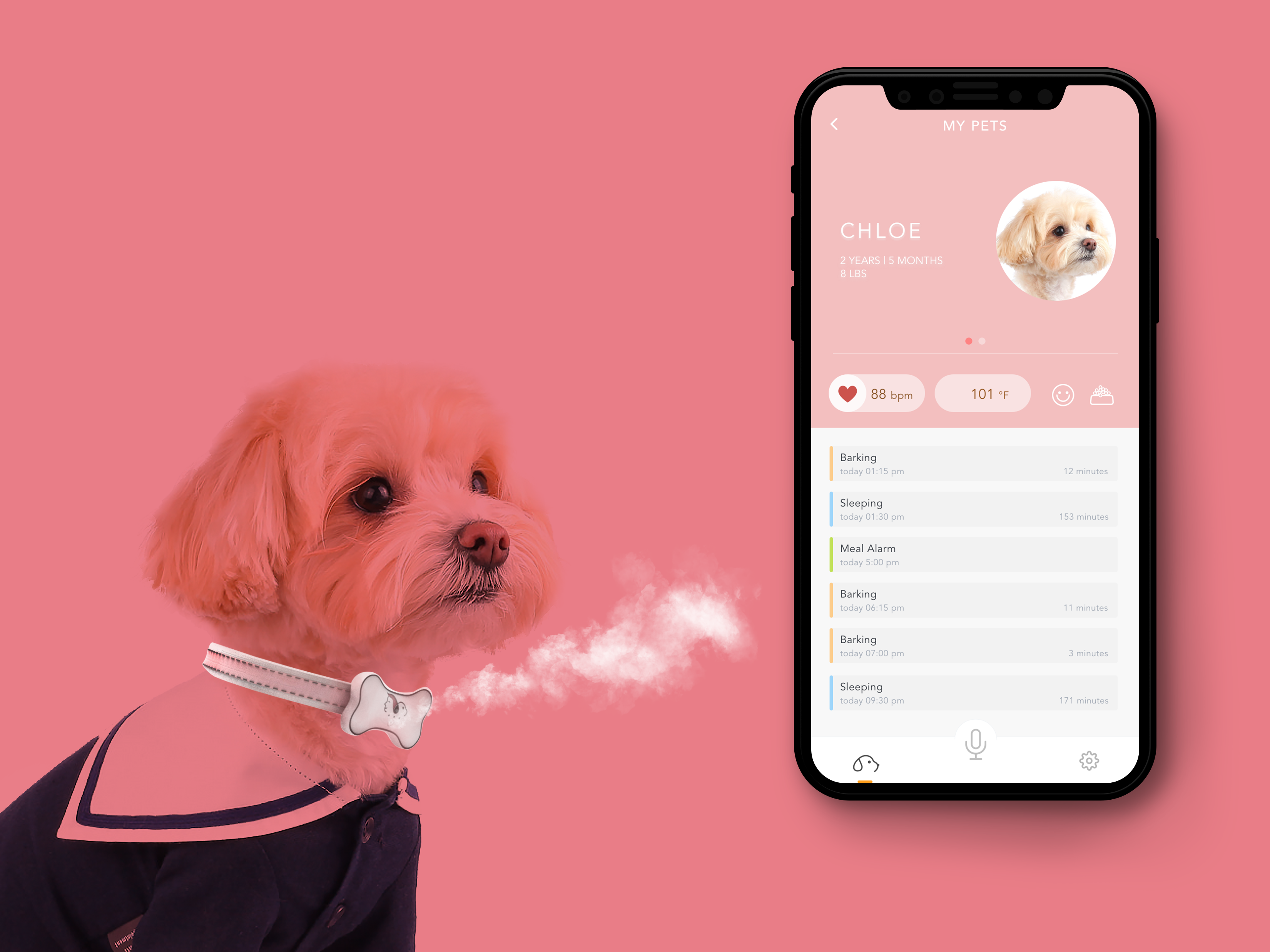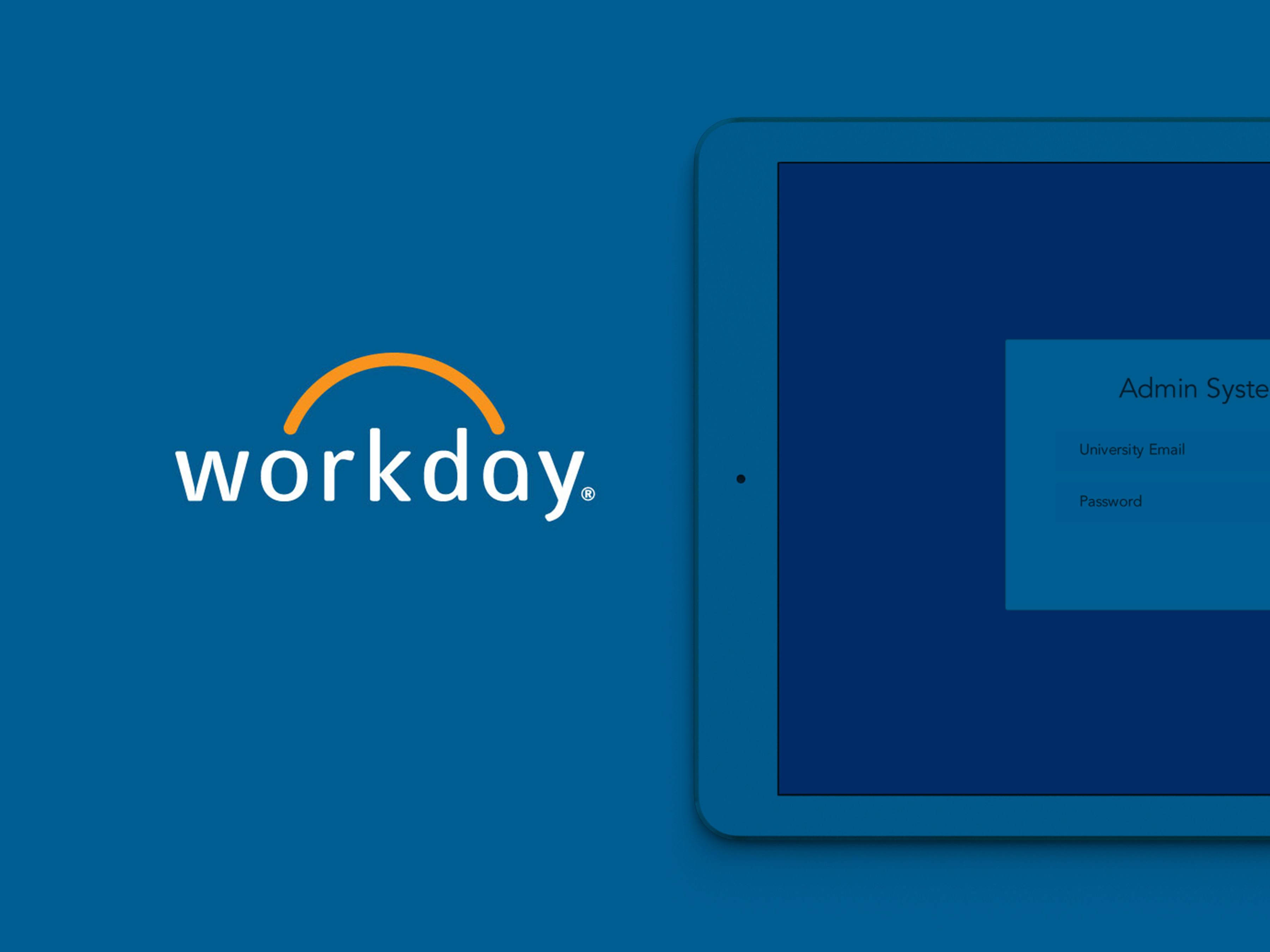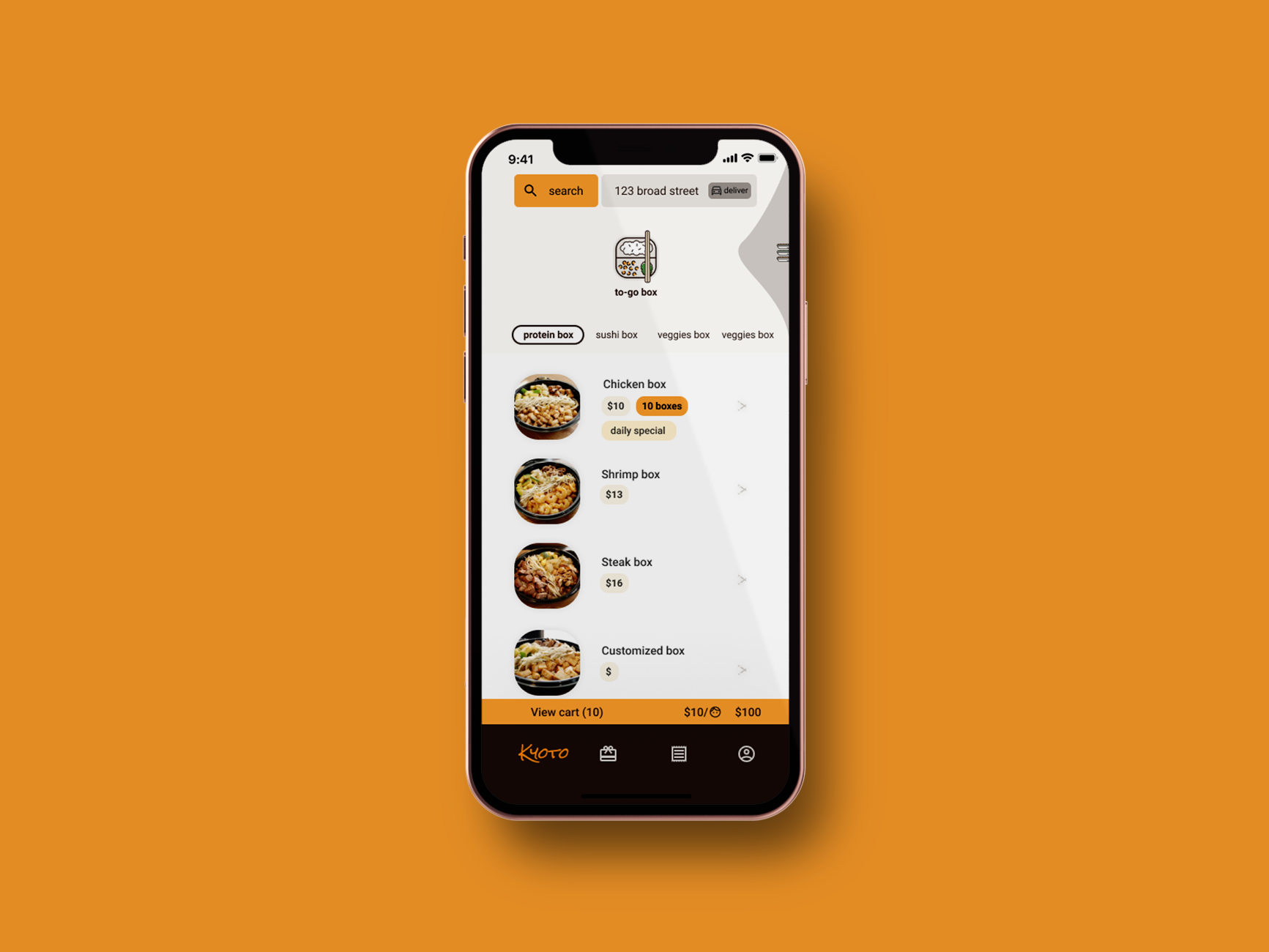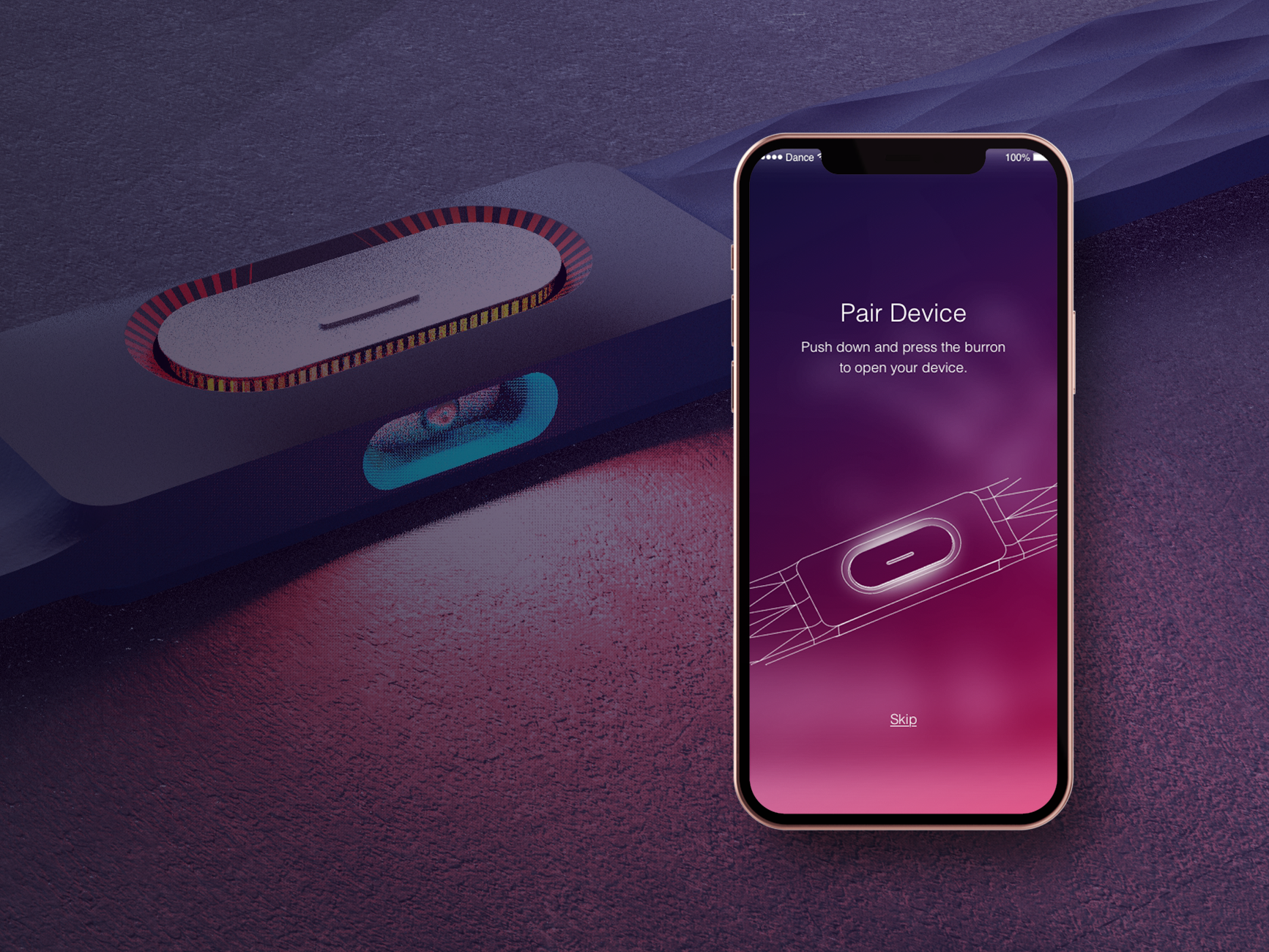My Role Timeline
Sole UI/UX Designer 12 months
Team Structure Launch
Marketing Team Jan, 2022
Project Manager
Engineer Team
AI Team
" our system like a bridge between global Asian startup companies and asian bilingual talents "
----- flyhigh
" Sourcing bilingual talents with the right skills and experience we need is a lengthy journey. Suppose a platform or community can bring us together, it can significantly speed up our recruitment process."
----- our clients
Background
Flyhigh talents used to be a traditional recruiting company specializing in recruiting oversea Asian bilingual talents for Asian enterprise clients. Flyhigh has cooperated with more than 6000 companies since its establishment. When I joined flyhigh, the company was transforming its traditional business into an online system and completely changing its profit model. They want to create a new online system that can mainly serve their enterprise clients, attract new bilingual talents, and at the same time can manage their hunting tasks.
Project Scope
Build the system from scratch, and the system covers three ends that serve different users
admin end ( internal system )
employer end (enterprise product ) (B TO B)
job seeker end (customer product) (B TO C)
My Contribution
I joined the team as the sole designer and built the above three-end system from scratch. I had the opportunity to do user research, define design solutions, and work with different teams across the company.
How I got started with enterprise-side design ?
◼︎Overall design process
◼︎Understand the company's design goals for the enterprise side
Flyhigh's business goals:
● Convert existing clients to potential users of our system. Gradually transform our system into an independent recruitment system specially designed for companies with overseas bilingual talent needs, and make direct profits through the recruitment system in the future.
● Fully transition its in-house recruiters to the newly developed system rather than relying on Zoho, a third party talent management system. We are in the midst of a company transition. Flyhigh still relies heavily on in-house recruiters in early stage.
The design requirement for the system is to serve
● type one user: the HR of existing clients to do the internal hiring process
● type two user: Flyhigh in-house recruiters to do the talent matching
◼︎Understand Users
Type one user:
Flyhigh's existing Clients: Flyhigh has cooperated with more than 6000 companies since its establishment. Their HR will be the key users of this system.
◉ Who are flyhigh's existing clients?
I asked the business cooperation department for 100 high-frequency client lists and asked them to help send out the questionnaire. I finally got 81 responses.
Our clients are Asian startups who need niche bilingual talents.
◉ User Journey Map
Type two user:
Flyhigh in-house recruiters: With the headquarter based in Silicon Valley and branches in New York, Montreal, Paris, and Guangzhou, we have in-house recruiters specialized in bilingual executive search and management consulting.
◉ Why we have type two users?
Currently, flyhigh uses Zoho for managing talent database. One of flyhigh's business goals is to have their in-house recruiters fully transitioned to newly developed system rather than relying on third party system.
From my interviews with Flyhigh's internal employees, they need to browse and upload a large number of candidates. They also need to post jobs on behalf of clients and match candidates to those jobs. This also leads to the fact that a candidate will be matched with multiple jobs under the same account, and they will appear frequently. Plenty of candidates and jobs will also appear in their pipeline. And this function will gradually weaken with the growth of key users in the future.
◼︎three of the many design challenges
Design challenge 1 : How to make the communication between the recruiter and hiring manager or team leader smoother ?
Design challenge 2 : How do I evaluate applicants efficiently, concisely and organized ?
Design challenge 3 : After the AI team joins the company, how do I add AI logic to the existing screening logic ?
◼︎Design Challenge 1
How to make the communication between the recruiter and hiring manager or team leader smoother ?
User Quotes
pain points from hiring managers:
● HM: "I feel “in the dark” about how the recruiting process is going."
● HM: "There is a gap or misunderstanding about the one team's needs and the one received from recruiters."
pain points from type one and type two users - recruiters:
● Recruiter: "Besides uncertainty in what keywords to use, variations in terminology grammar and meaning makes the screening process near impossible. Current software also do no provide much personalization around keywords and their meaning."
● Recruiter: "I need to get a ranking of key skills from our team and would like to use those key skills to filter out some ineligible applications. "
● Recruiter: "I need to follow up on applicant feedback from various members via email or face-to-face, track progress, or better answer applicant questions."
Design Ideations
I have designed three options based on different levels of technical sophistication.
◉ Proposal 1
assign evaluation tasks to HM and associated team members based on each job position, track and remind the team evaluation process through internal message
This solution allows HR to build various teams associated with different job positions. Each team member can view and evaluate the candidate based on permission settings. HM can track and involve the entire hiring process. Internal messages give seamless team communication.
• under each candidate, recruiters can see who involve in the valuation
• the recruiter can select team members or send a registration invitation to a new user
• the recruiter can see team members under each job position and click to send direct messages or see feedbacks
• the recruiter can can send direct messages for seamless communication
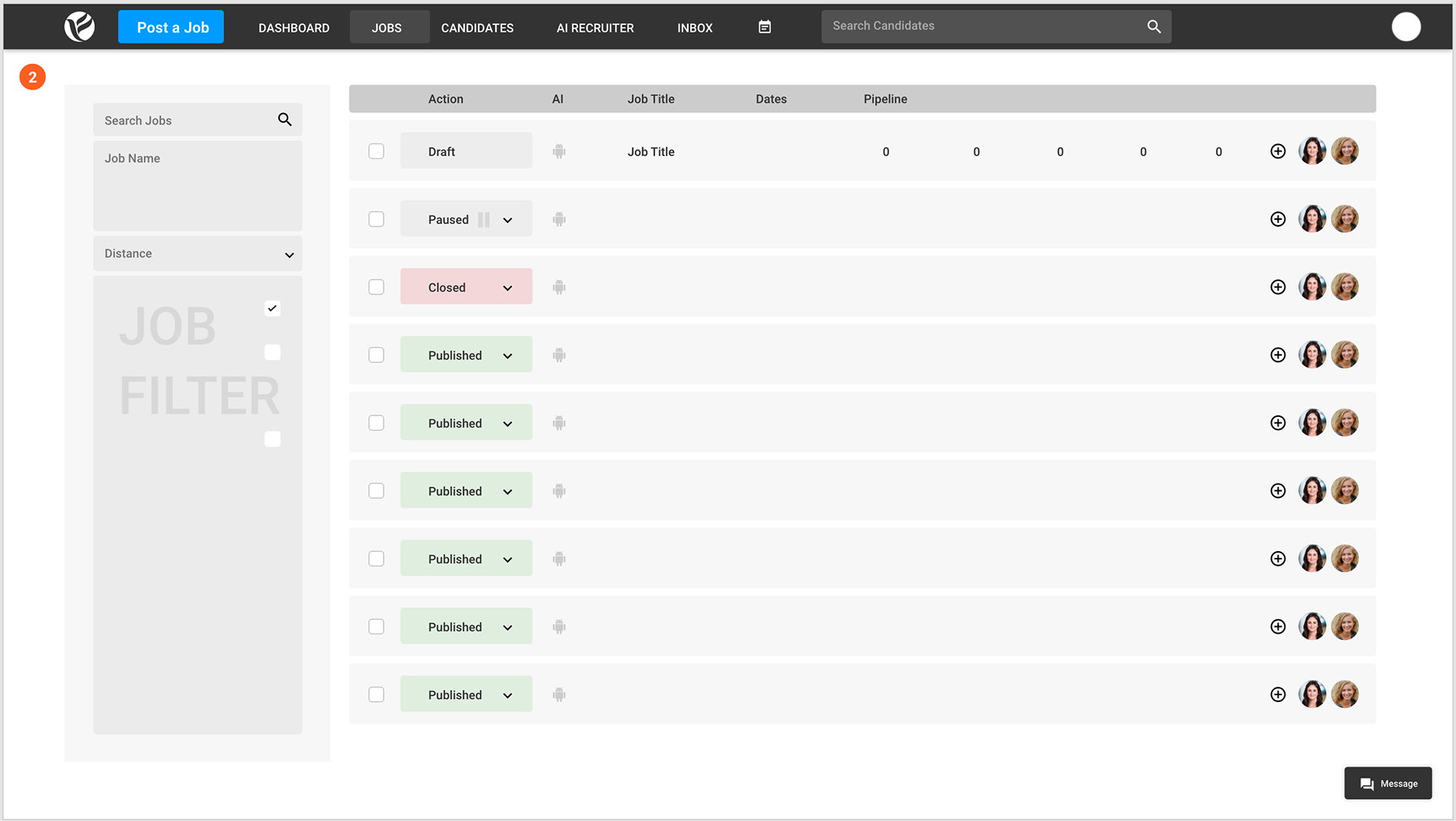
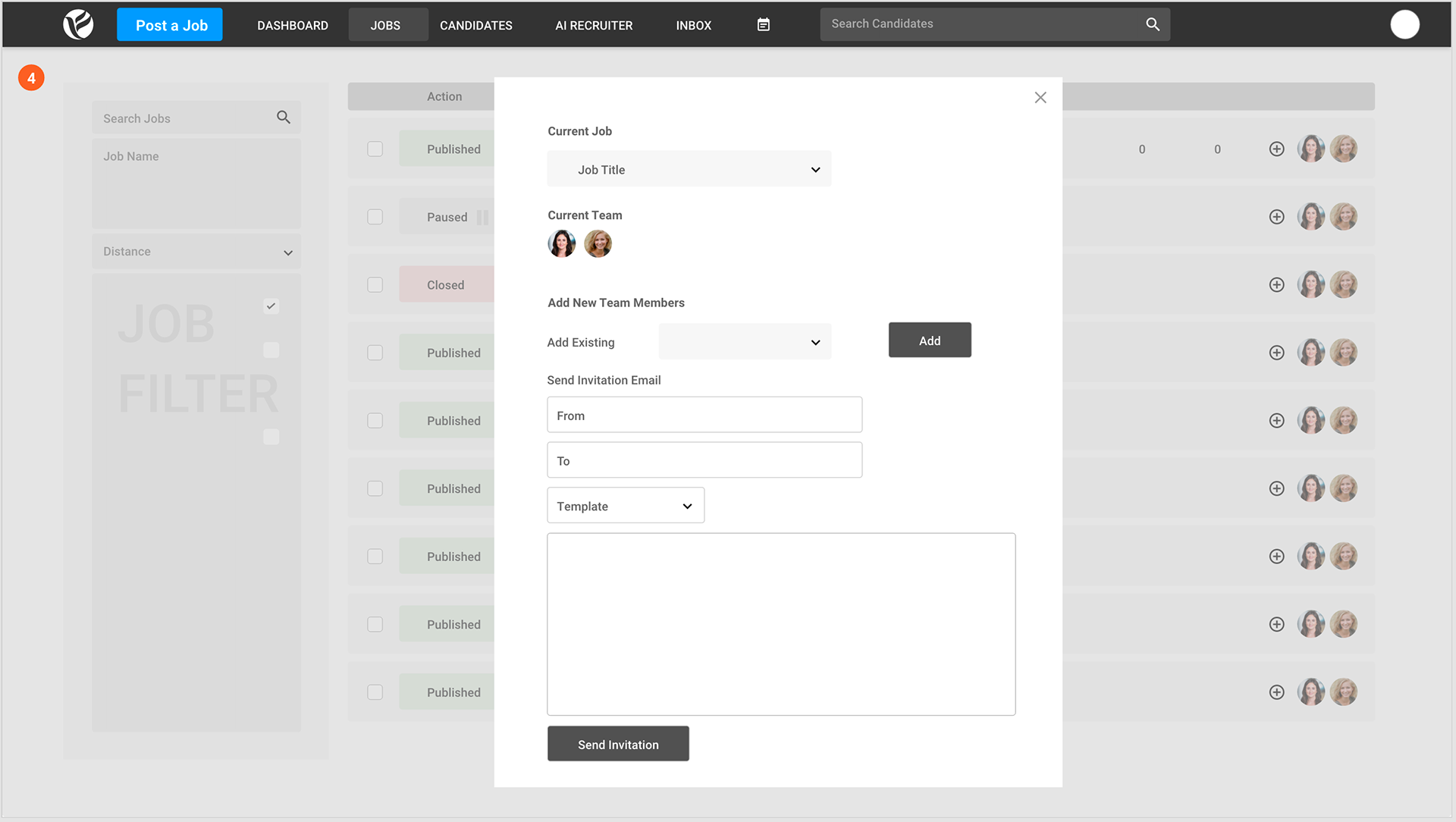
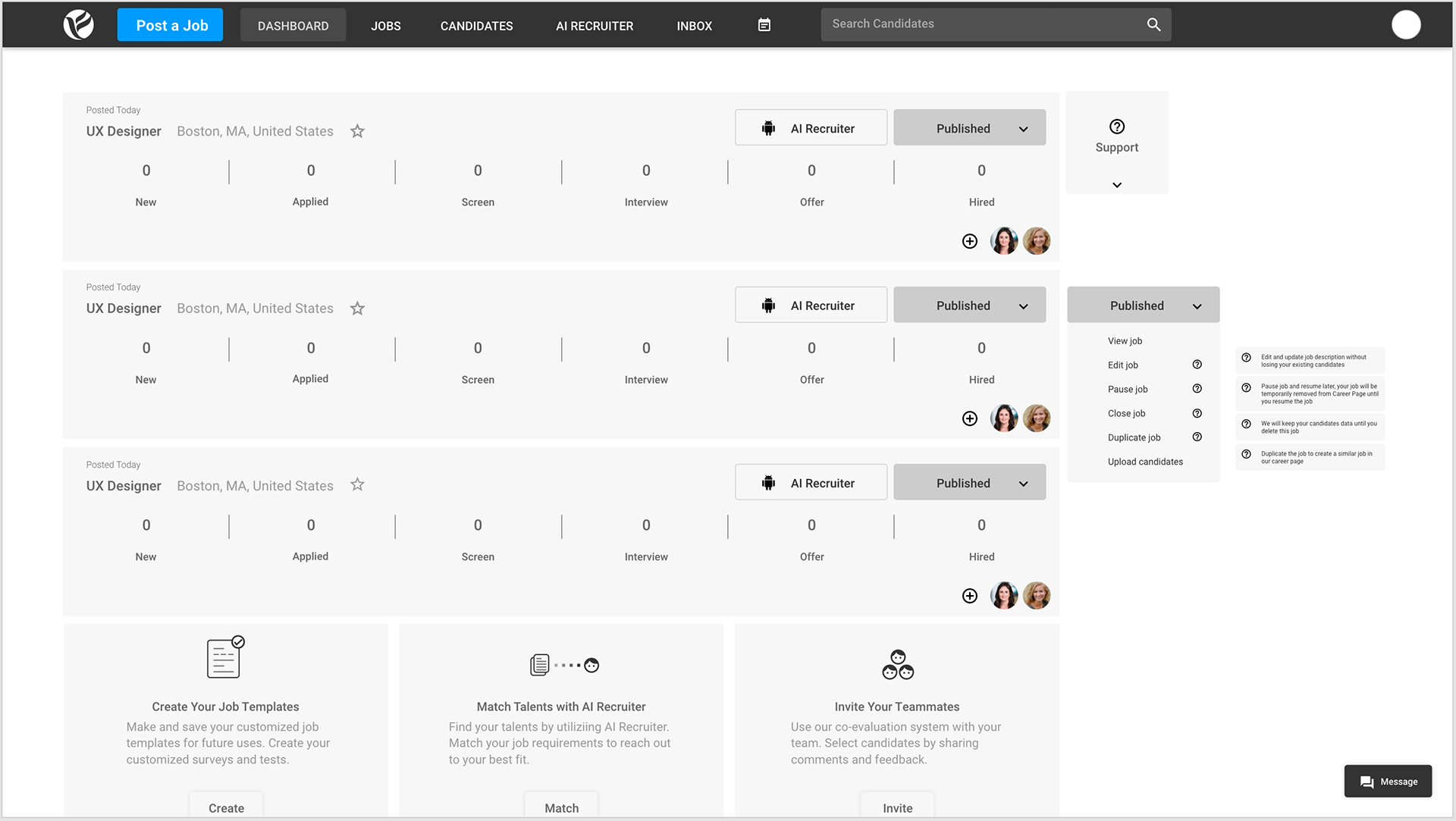
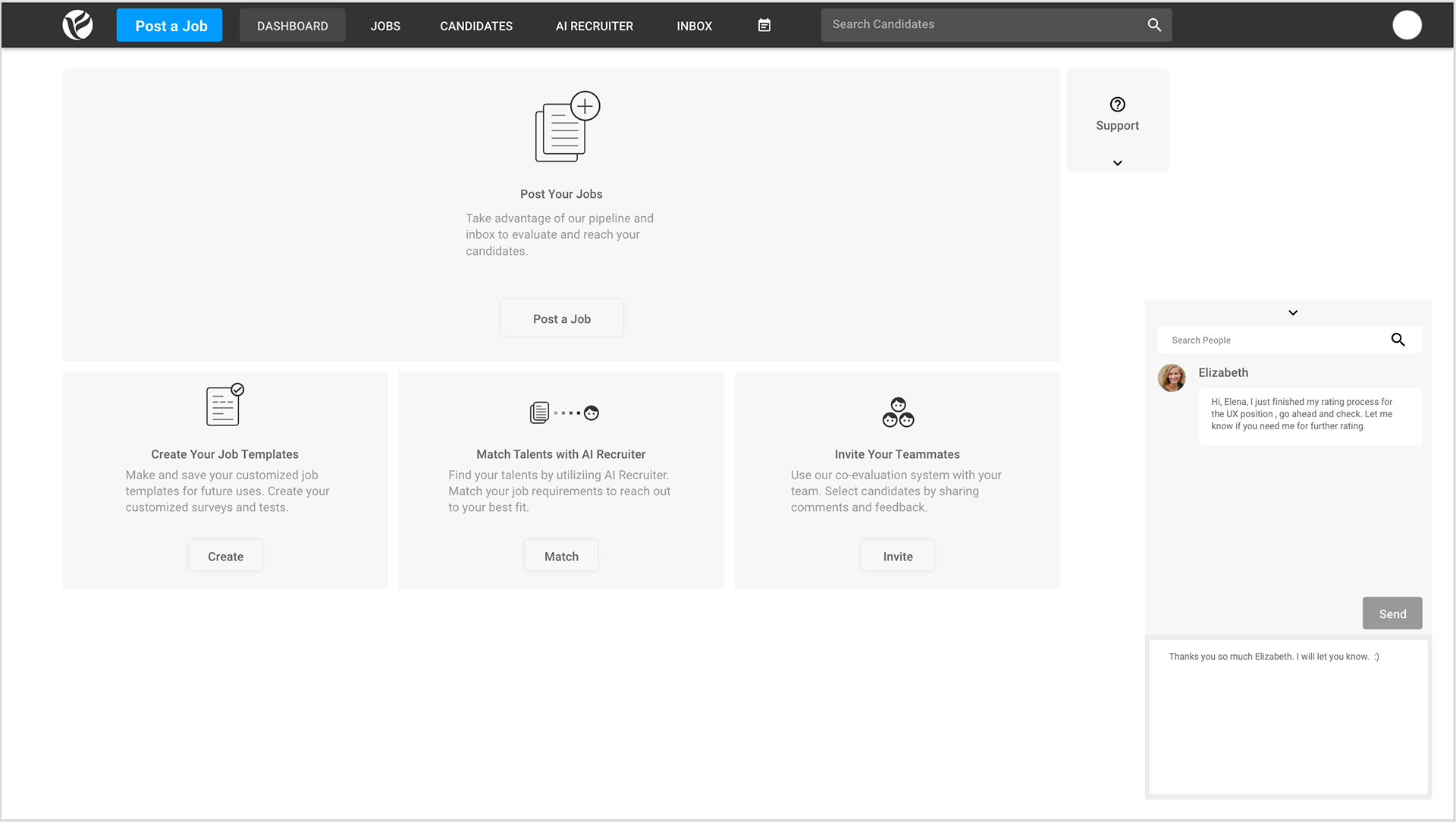
◉ Proposal 2
add HM as a viewer based on each account and manage feedback through the inbox
The solution allows HR to sets up a team viewer under the company profile. The viewer has the right to view and write comments under the candidate detail page. The viewer/HM can track the hiring process. The viewer has no right to evaluate to simplify the evaluation corporation. And can communicate through the inbox, which connects to a personal email address. HR can manage the team feedback through our system.
• the recruiter can add notes and see comments under candidate detail page
• the recruiter can send an email, share candidates through each candidate listing card
• use inbox to create folder under each job position and manage the team communication
• under company profile to set up the viewers
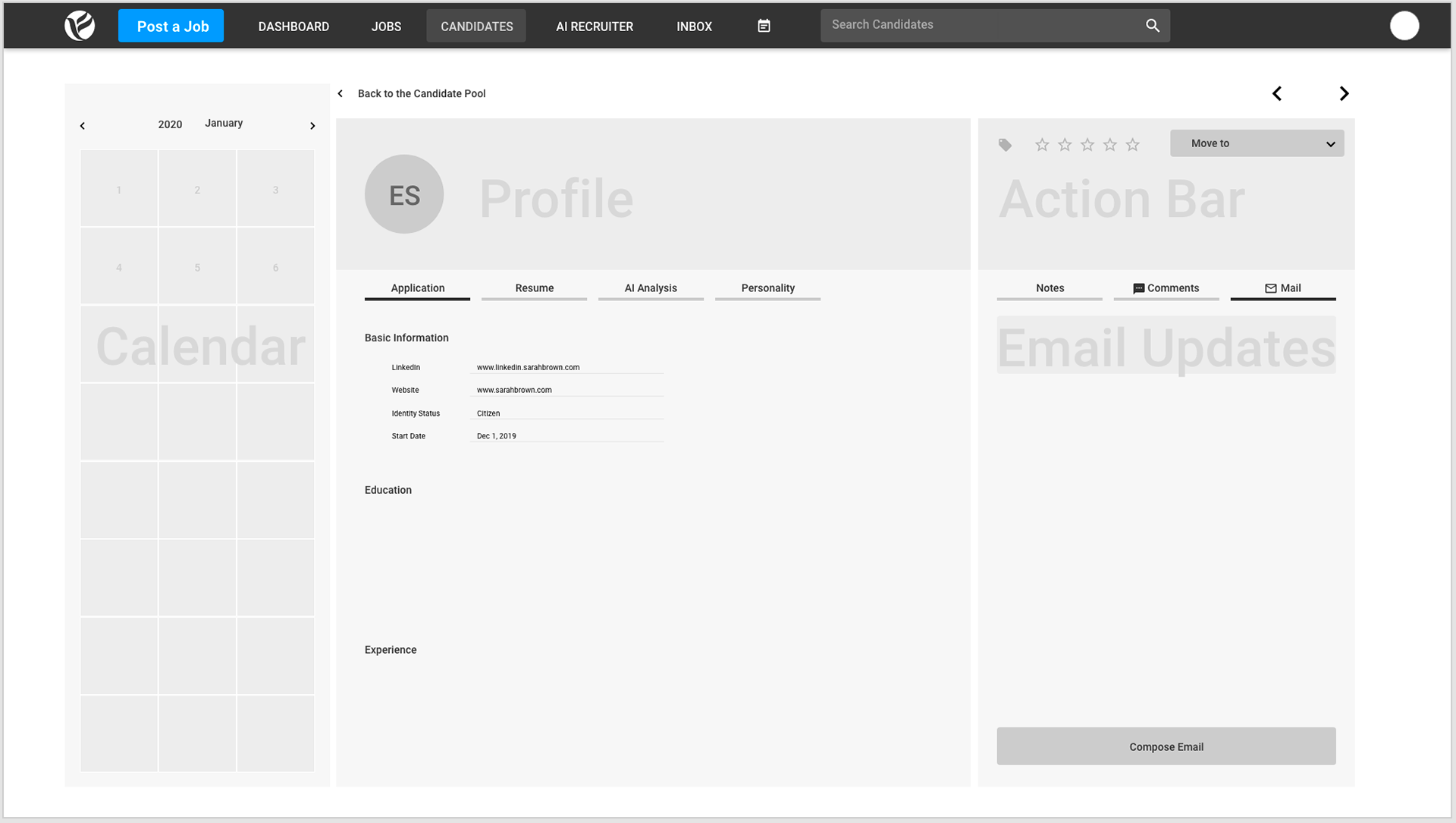
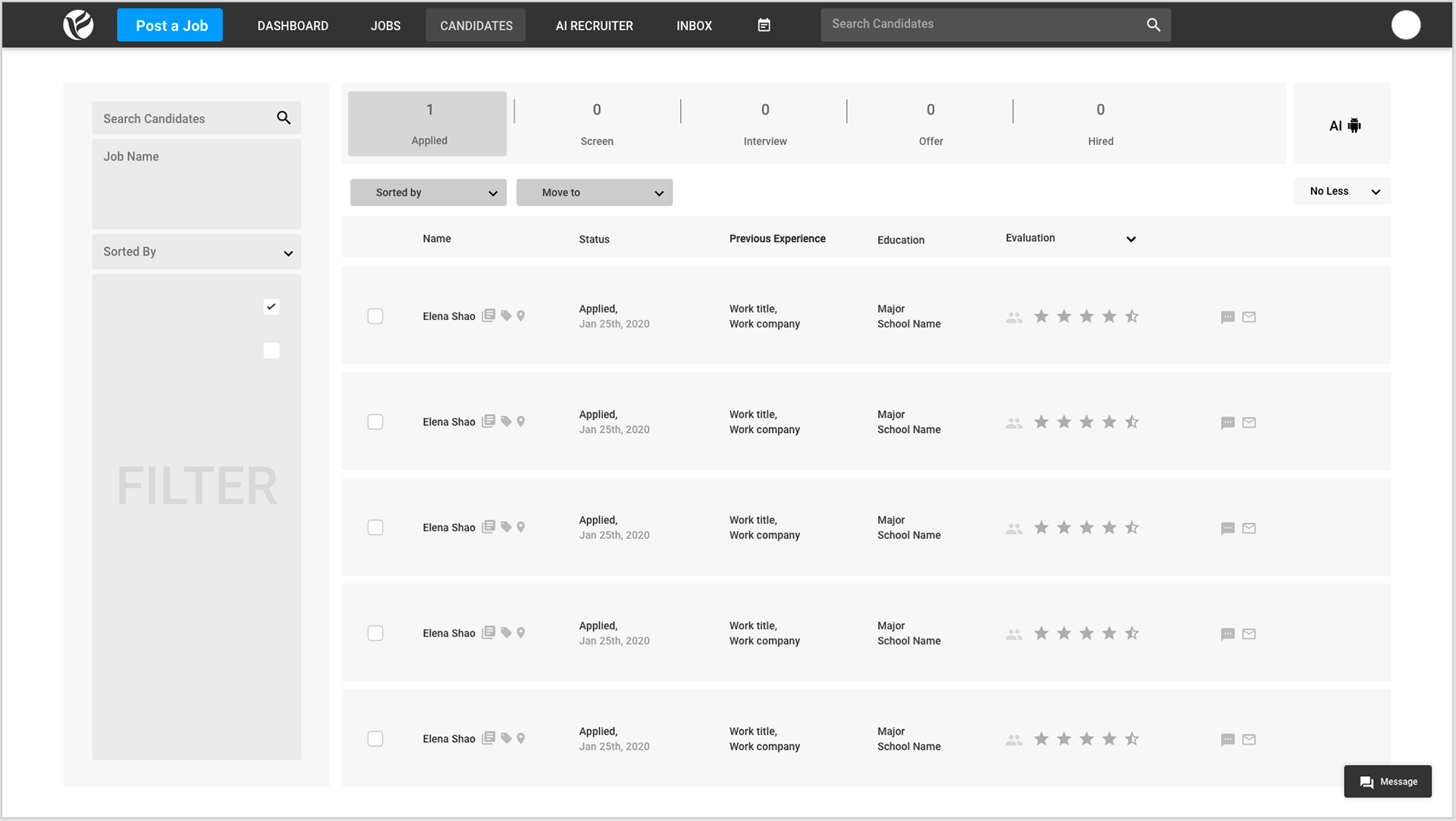
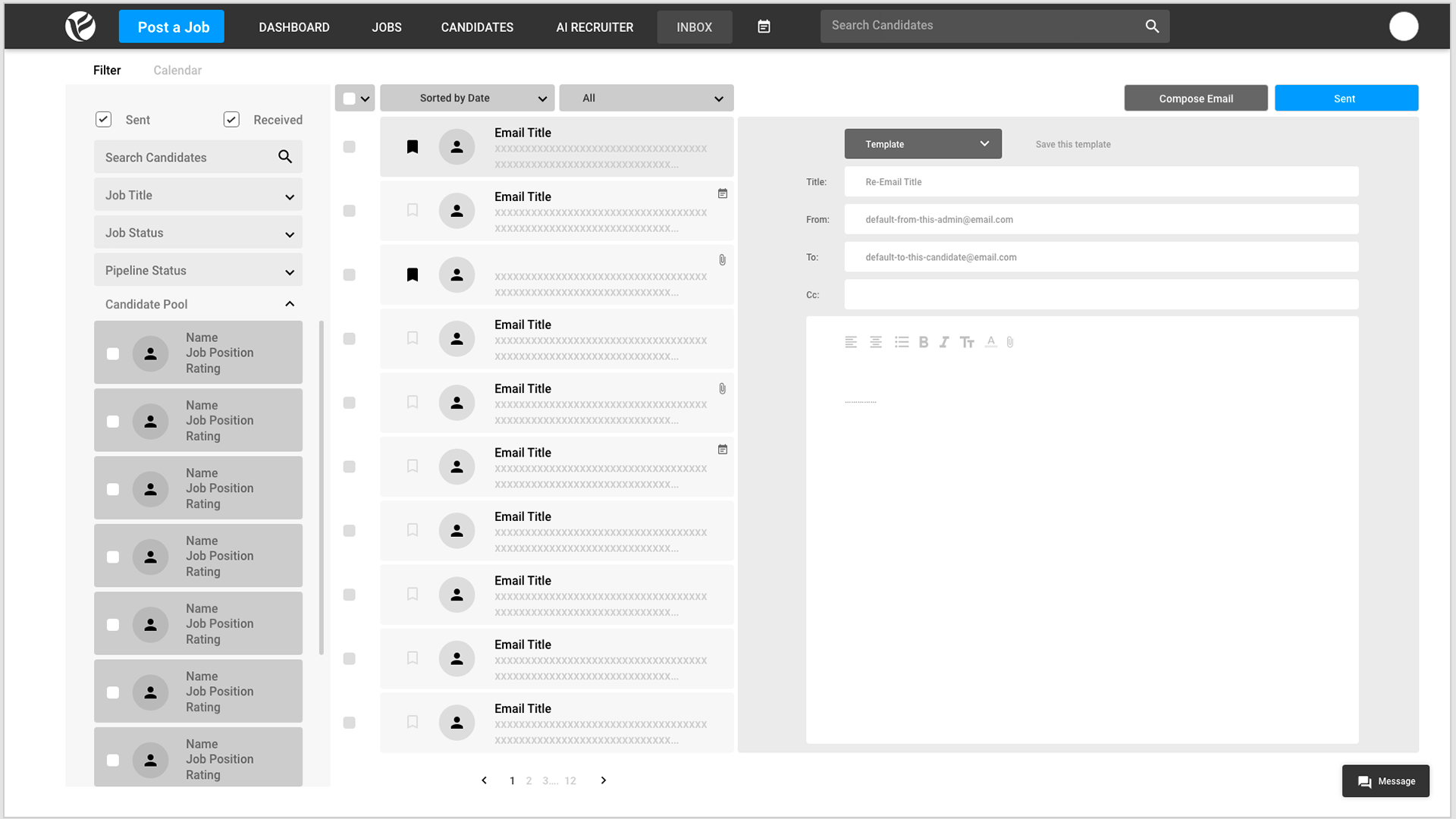
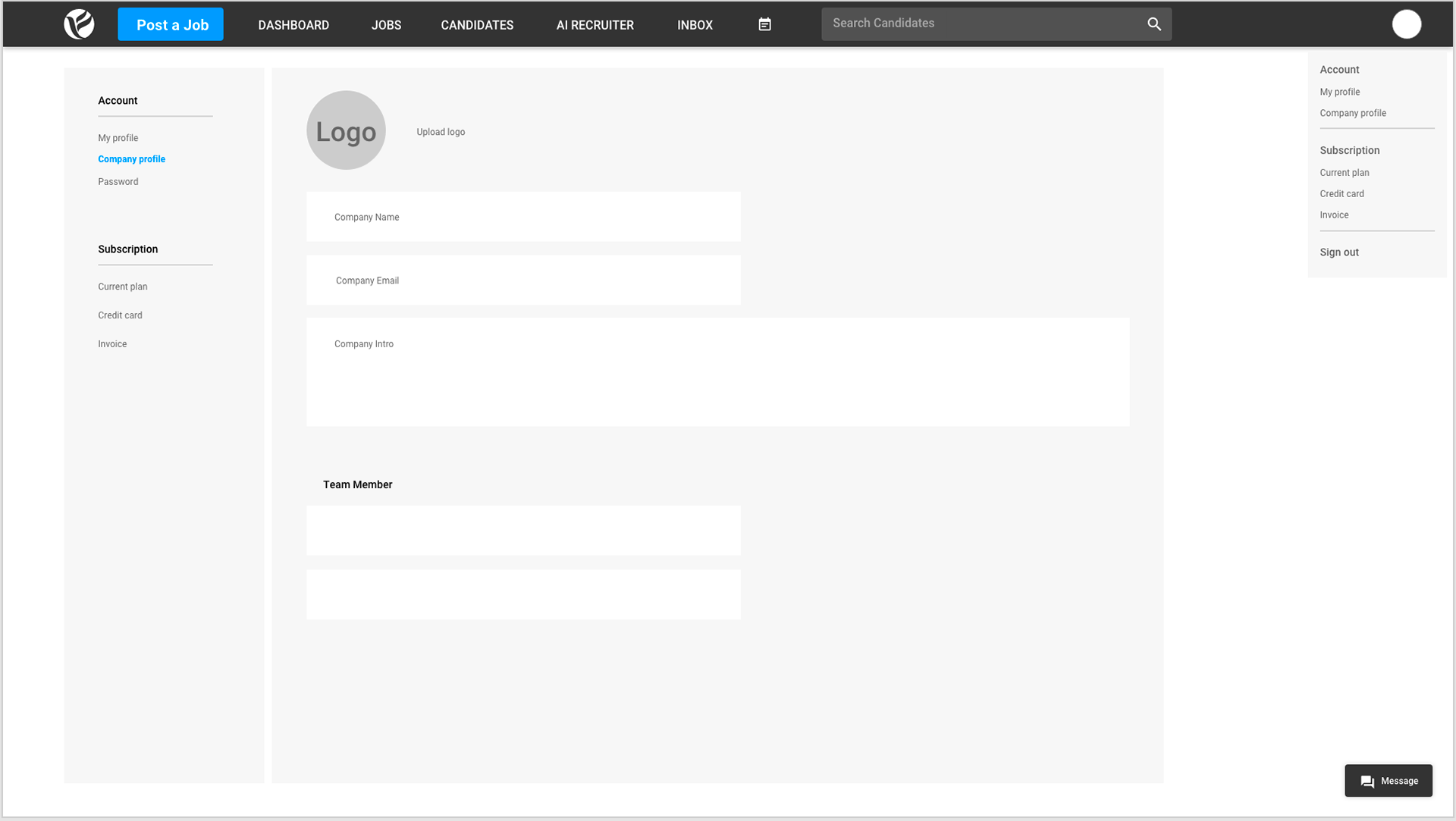
◉ Proposal 3
recruiter as an individual user and the design of the system pays more attention to the tracking and management of self-tasks
The system's design pays more attention to the tracking and management of self-tasks. I designed a dashboard for the recruiter to better track the work process and manage the team communication, such as reminding the kick-off meeting of HM, reminding HR to check the inbox mail, etc., to promote the work of the recruiter by himself. The recruiter communicates and manages with HM and the team through the inbox.
• dashboard for tracking the hiring process and managing the team communication
• while screening resumes, recruiter can add comments from teammates
• recruiter can set up meeting time for team members and send invitation email through inbox
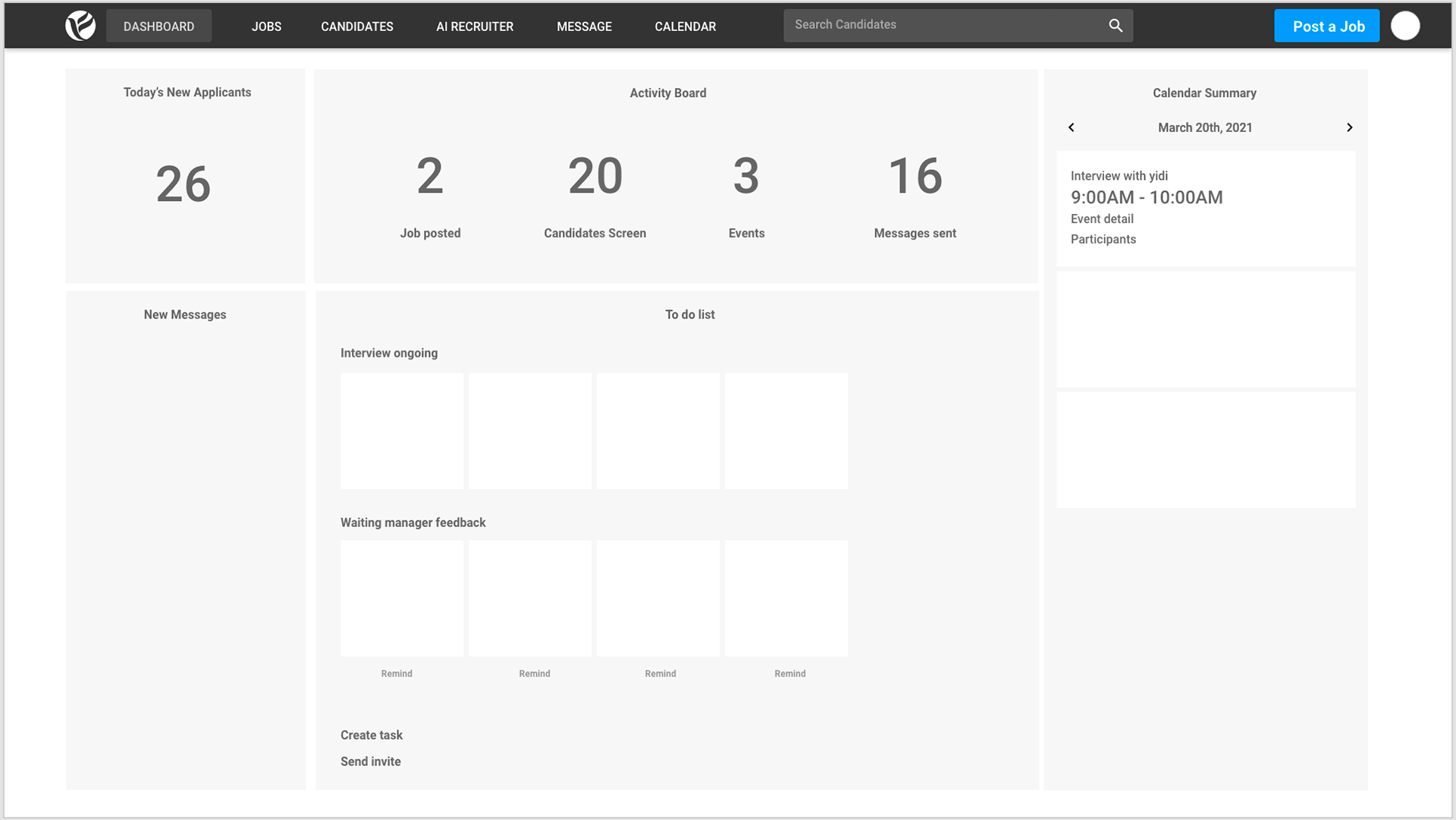
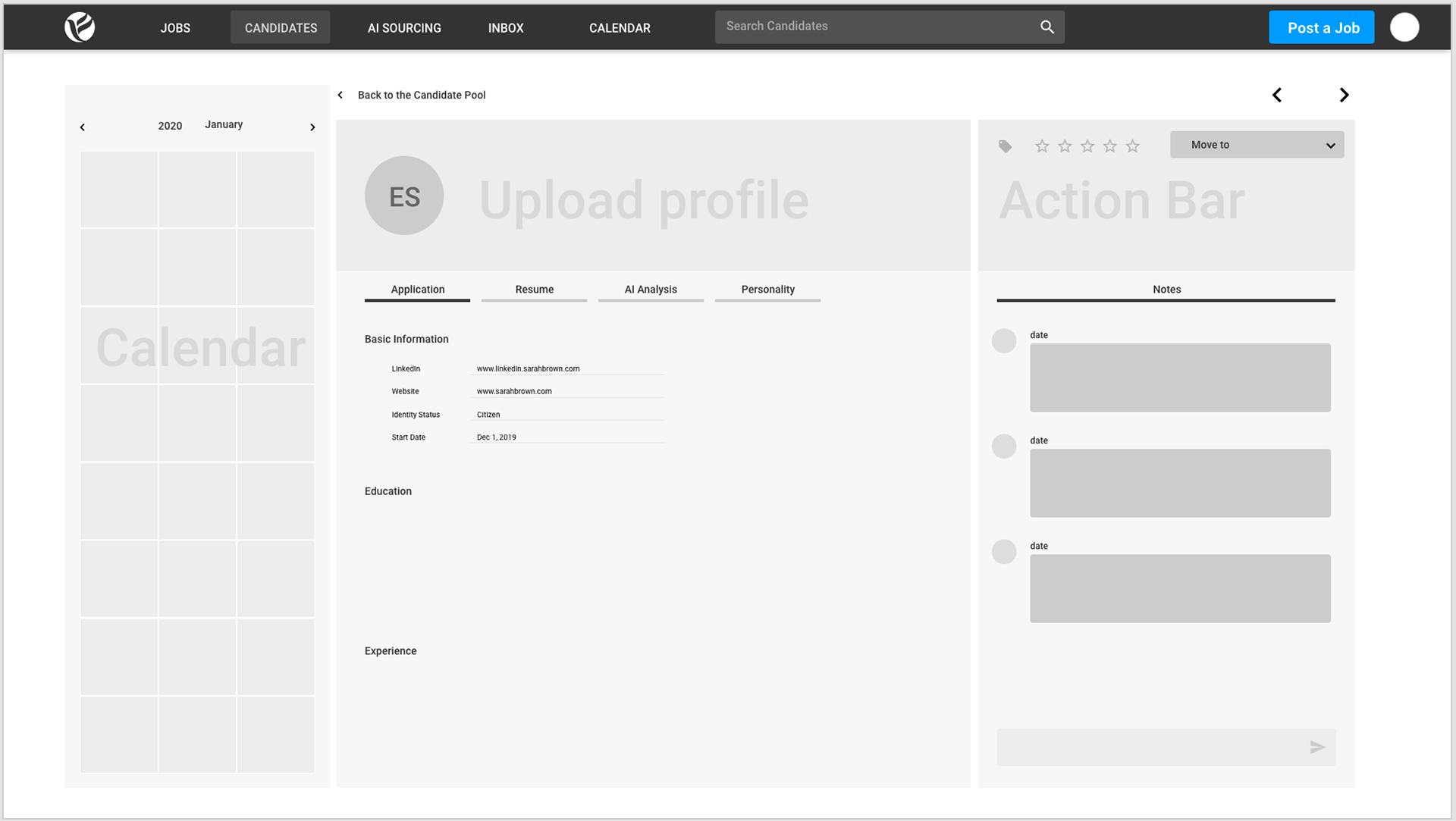
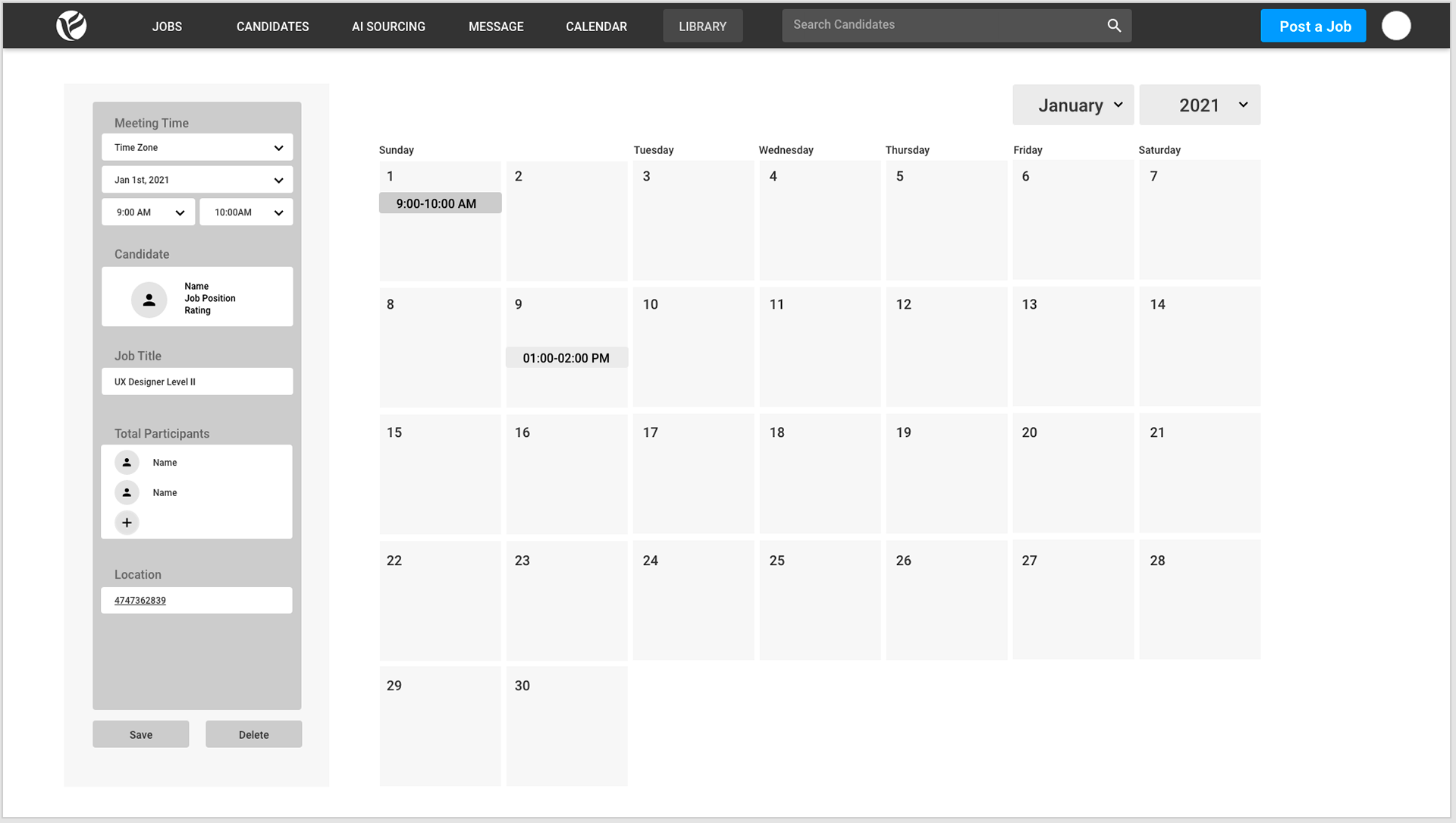
◉ Final solution : solution 2
Reasons:
From the perspective of the company, Option 1 has better team cooperation and team communication, but needs to deal with multi-user scenarios and set permissions at different levels, which is too complicated and requires more funds at this stage. We will approach such multi-user exchanges and cooperation in the future. Option 3 is more inclined to independent output, and we hope to promote teamwork.
From a key user perspective, 48% of our users are startups with fewer than 50 employees. They are more suitable for the simple interaction of Scenario 2 and the independent work of Scenario 3. Because plan 1 needs to buy more registered users, it may be harder to sell on the payment plan.
◼︎Design Challenge 2
How do I evaluate applicants efficiently, concisely and organized ?
User testing
what: draft design version for testing
testers: 10
testing time: 30 mins/each
testing method: video recording with speak out loud
testing tasks: post a job, manage jobs, evauate candidates
User testing result
Pros: I do like the horizental pipeline which gives me clear idea about hiring process.
I do like the candidate detail page which gives me option to leave the notes and quick switch between candidates with my keyboard.
I still feel struggling by manually selecting candidates.
Cons: I don't like the horizontal filter bar which block the visual space.
I don't like the way I can click several pipeline statuses and show mix statuses together, then I have to unclick that status to hide part of the candidates. Too many clicks.
I don't like the table show me too many info, now I have 6 statuses in my table and the table is way too long.
Do: Users do use search bar and filter with high frequency.
Users don't use the table to compare candidates.
Users do use the candidate detail page to compare candidates.
Design challenge 3
After the AI team joins the company, how do I add AI logic to the existing screening logic ?
Overall Design Process
My deliverables
Define Features
Understand what users need and prioritize what to build
Make Product Roadmap
Monitor progress toward launch and consider long-term design opportunities
Build the Layout Structure
Supports consistency across applications by defining visual grids, spacing, and sections
Design Style Guide
Creating a memorable company personality and identity to our audience
Getting into Detail Design Challenges
challenge 1: How to make the communication between the recruiter and hiring manager smoother ?
challenge 2: How do I evaluate applicants efficiently, concisely and organized ?
challenge 3: After the AI team joins the company, how do I add AI logic to the existing screening logic ?
Define Features
How did I draft the feature? I went through four sources.
First, through our existing users to understand which features they need most or which feature is essential to have? Which feature is great to have? The second is the company's plan and budget. The company plans to use it online within a year while saving on budget. Flyhigh also prefers more tech-savvy and younger designs. Third, communicate with engineers, understand their production time, and estimate the features' complexity. And lastly, understand the competitors' feature list to fulfill the future add-on features.
From existing users
Flyhigh has cooperated with more than 6000 companies since its establishment. This system mainly serves them. I selected about 100 high frequency customers, sent the survey, and analyze the survey.
key takeaway:
48% of clients are from startups with only one HR, or possibly no HR. Their pain point is that the company has very low visibility. They need to spend large amount of time sending inmails on LinkedIn to contact suitable candidates with low reply. Large companies account for a certain percentage of flyhigh's revenue, but only 13% of users. Their difficulty is more in screening, sorting and tracking after receiving a large number of applicants.
Functional considerations:
1) take off multi user permision (employer)
2) Increase the visibility, credibility of the company (job seeker)
3) emphasize screening, sorting and tracking behaviors (employer)
Company's plan and budget
Currently, flyhigh uses Zoho for internal talent management. One of flyhigh's business goals is to have their in-house staff fully transitioned to our v3 system rather than continuing to buy Zoho. This means that the system needs to serve its key user, the employer, and the talent management within Flyhigh employees. From my interviews with Flyhigh's internal employees, they need to browse and upload a large number of candidates. They also need to post jobs on behalf of clients and match candidates to those jobs. This also leads to the fact that a candidate will be matched with multiple jobs under the same account, and they will appear frequently. Plenty of candidates and jobs will also appear in their pipeline. And this function will gradually weaken with the growth of key users in the future.
Functional considerations:
1) must have mass uploading candidates (employer)
2) consider multiple jobs under same candidate profile (employer)
3) consider large amount data under pipeline (employer)
User flow
Wireframes & mid-fi
hi-fi design
